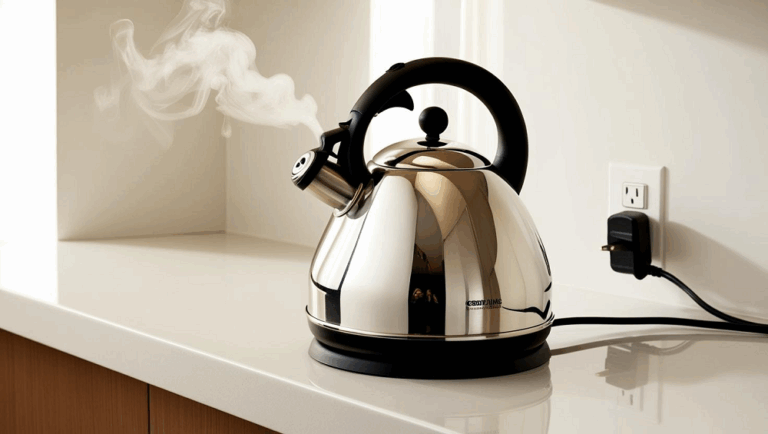What Cost and Electricity usage Do Common Appliances Use in the UK?
This table provides estimated energy usage and running costs for common household appliances in the UK, based on average usage patterns and the current electricity price cap of 27.03p per kWh (as of April–June 2025).
| Appliance | Power (kW) | Daily Usage | Monthly Cost (£) | Yearly Cost (£) |
|---|---|---|---|---|
| Dishwasher | 1.2 – 2.4 | 1 hour/day | £5.04 – £10.08 | £60.48 – £120.96 |
| Electric Kettle | 1.5 – 3.0 | 15 mins/day | £1.05 – £2.10 | £12.60 – £25.20 |
| Washing Machine | 0.5 – 2.2 | 3 loads/week | £3.36 – £7.39 | £40.32 – £88.68 |
| Tumble Dryer | 2.0 – 4.0 | 3 loads/week | £8.40 – £16.80 | £100.80 – £201.60 |
| Microwave | 0.7 – 1.2 | 10 mins/day | £0.49 – £0.84 | £5.88 – £10.08 |
| Fridge-Freezer | 0.1 – 0.4 | 24 hours/day | £3.36 – £13.44 | £40.32 – £161.28 |
| Electric Oven | 2.0 – 3.0 | 30 mins/day | £1.35 – £2.03 | £16.20 – £24.36 |
| LED TV (55″) | 0.06 – 0.1 | 4 hours/day | £0.34 – £0.56 | £4.08 – £6.72 |
| Laptop | 0.05 – 0.1 | 8 hours/day | £0.56 – £1.12 | £6.72 – £13.44 |
*All costs are approx to the date of publishing, and all costs are averages.
Key Notes:
- Costs may vary based on electricity rates in your region.
- High-power appliances (kettles, dryers, ovens) cost more due to short but intense usage.
- Standby power (phantom load) can add 5–10% to bills.
Want to know how much your appliances are costing you to run each month?
Use the calculator below to estimate electricity costs based on power rating, daily usage, and current energy prices.
Electricity Cost Calculator
*Where to find the power rating (kW):
- Check the label or sticker on the appliance (usually on the back or underneath)
- It might be listed in watts (e.g. 2400W = 2.4kW) — just divide watts by 1000 to get kW
- You can also check the user manual or manufacturer’s website
Tips to Save on Appliance Electricity Bills at Home
1. Use eco modes where possible
Dishwashers and washing machines often have eco settings that use less water and heat—cutting both electricity use and costs.
2. Only boil what you need
Electric kettles are energy-hungry. Fill them with just the amount you’re going to use to save power each time.
3. Dry clothes naturally
Tumble dryers cost over £100 per year to run. Line-dry or use an airer when possible.
4. Avoid standby power
TVs, laptops, microwaves, and chargers use electricity even when idle. Switch them off at the wall to avoid phantom load.
5. Run appliances at off-peak times (if on Economy 7/10 tariff)
If your energy plan includes off-peak hours, using appliances like washing machines or dishwashers during those times can lower your bill.
6. Keep fridge/freezer coils clean and full
A dusty coil means more effort to cool. Also, a full fridge runs more efficiently than an empty one.
7. Batch cook with your oven
Since ovens use a lot of energy, cook multiple meals at once and reheat in a microwave—which uses far less electricity.
8. Use lids when boiling water on the hob
This reduces cooking time and energy use if you’re not using an electric kettle.
Useful Resources
- Ofgem – Energy Price Cap Explained
- UK Government – Energy Consumption Calculator
- Sust-it – Appliance Running Cost Calculator


